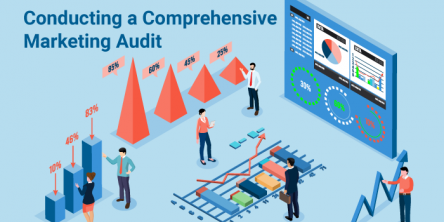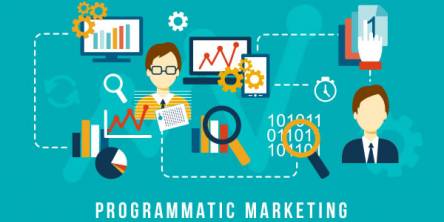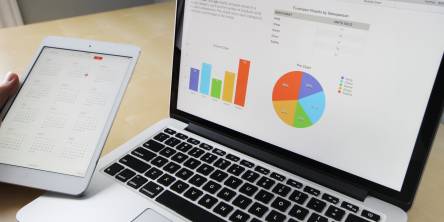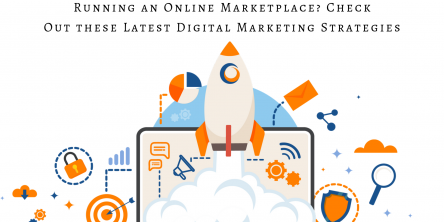Platforms for the Industrial and B2B Internet of Things
The business-to-business (B2B) and industry-focused aspects of the Internet of Things (or Industrial Internet of Things, IIoT) is one major segments of the market. While it does not attract the same attention within the general media or really get noticed by the average consumer, it is within the B2B/IIoT segment that some of the major IoT software developments are happening and where some of the major struggles between heavyweight companies are taking place.
The IIoT covers a range of smart product and design principles, applications, and data-driven automation within the industrial sector (with the ‘industrial’ part of the name often used to cover other sectors including manufacturing, automotive, infrastructure and so on). The aim behind the IIoT is to enable companies to, for example, increase the cost-efficiency of their internal operations, provide optimized asset allocation, and improve their offerings to their customers.
In 2017, Bain & Company predicted that the B2B market would be worth more than $330 billion annually by 2020 – more than twice as much as the consumer/personal/household market – and that within this, some $85 billion would be within the industrial sector (see figure below, source: Bain and Company).
However, one of the major challenges within the IIoT sector is that there is currently no clear and obvious market leader or single, standardized platform that the majority of firms are using. In many respects, this is not surprising: the sheer range of industrial and business activities that are undertaken means that creating any single, one-size-fits-all platform would be a massive challenge and quite probably not be able to cater to the requirements of specialist businesses in the way that a more focused platform can.
A competitive struggle is underway between some of the major industrial and technology multinational conglomerates, with billions of dollars being poured into IIoT research, development and rollout. To name just a few:
- GE has Predix;
- Siemens, Mindsphere;
- Schneider Electric, EcoStruxure;
- Atos, Codex;
- PTC, ThingWorx;
- ABB, ABB Ability; and
- Microsoft, Azure.
Various rankings of the different IIoT platforms have been produced in the last year, with for example the market research and strategic consultancy Pierre Audoin Consultants (PAC) producing the PAC RADAR of IoT Platforms in Europe and Gartner producing the Magic Quadrant of IIoT platforms.
While these rankings compare the various platforms, in some respects it is something of a case of comparing apples and oranges. Some platforms are company or company-product specific and cover the whole range of platform requirements from hardware to cloud hosting to software. Others are solely focused on the specific industrial area and applications for it. An article on DZone described this well. For example, ABB Ability appears to be focused in particular on ABB solutions. Siemens’ Mindsphere has announced that it has AWS support and can also run on MS Azure and SAP Cloud Platform and it also appears fairly open to developers. Schneider Electric provides a range of software applications through their EcoStruxure IoT platform but ones that are industry-specific for energy, power, buildings, etc, and also appears to be based off the Microsoft Azure IoT Suite.
Even though the development of IIoT platforms is still in flux, there appear to be some drivers of future activity that are been seen. One of the most obvious is the cost. When even GE announces that it has to cut back on investment and has faced technical problems and delays with Predix, it’s clear that the scale of providing a total IIoT solution is immense and challenging. In its 2017 overview, Bain commented that it believed that partnerships would be essential in the future, where industrial leaders worked with specialist analytical companies or leaders in providing bespoke solutions in specific sectors, whether this is automotive IoT solutions or infrastructure management.
What is equally clear is that the sheer range of different B2B and industrial activities taking place will present major challenges to standardization, although there are some signs that, for example, MS Azure is becoming an underlying IoT platform on which other companies build their individual requirements. As with all IT platforms and choices, however, once companies make major decisions on investment, wholesale changes will be problematic and, often, expensive.
In the year ahead, there will be continued development within the B2B and IIoT space, with more money and effort going into the field than into consumer-focused solutions. How companies balance the requirements for specificity, localisation, responsiveness, security, and cost will remain one of the challenges that all firms operating in this field will have to address – and address rapidly if they are not to fall behind their competitors.
Similar Articles
Conducting a comprehensive Marketing Audit is essential in assessing the effectiveness of your current marketing efforts and identifying areas for improvement. A Marketing Audit is a systematic examination of your marketing strategies, tactics, and processes to determine their effectiveness and identify areas for improvement.
As a specialized listing platform offered by the search engine, Google My Business (GMB) allows entrepreneurs to claim or create a company listing. The primary purpose of GMB profiles is to provide relevant information to consumers, help businesses show up in searches and on Google Maps, and enable customers to leave reviews.
From the moment of the introduction of the internet, it has created a revolution in every sector of the world. Various companies have focused on building up websites and making them a source for their outreach.
If you have access to accurate data about your clients, then it can help all your sales representatives to perform better. This is where the HubSpot Sales Hub comes into play as it can provide all the necessary tools to gather this data and use it to your advantage
Gone are the days when ad agencies relied on Television, billboards, newspapers, and radio to promote their products and services. Now, advertisements are showcased on digital platforms. Taking forward, the innovators have introduced a newer concept named programmatic advertising that has eased a lot of efforts for the advertisers.
Any organization will be able to see the importance of digital marketing in their day to day work. Digital marketing is used to reach more people and create a new set of customers.
A successful digital marketing team comprises of a variety of experts with unique skills, knowledge, and experience. Online marketing is a career that combines knowledge of conventional advertising, web development, search engine optimization strategies, content writing, social media engagement, and more
Pick your suitable digital marketing strategy from a below-given list of latest strategies to enjoy digital success for your online marketplace. Check for more!
Any HVAC business owner is always hungry for more leads. The more leads you get will translate to more returns for your business, and that is the primary goal for any business. This simply means that you have to keep on checking and developing your Company's HVAC lead generation strategy to maintain a high profile in the market.


39f6.jpg)






